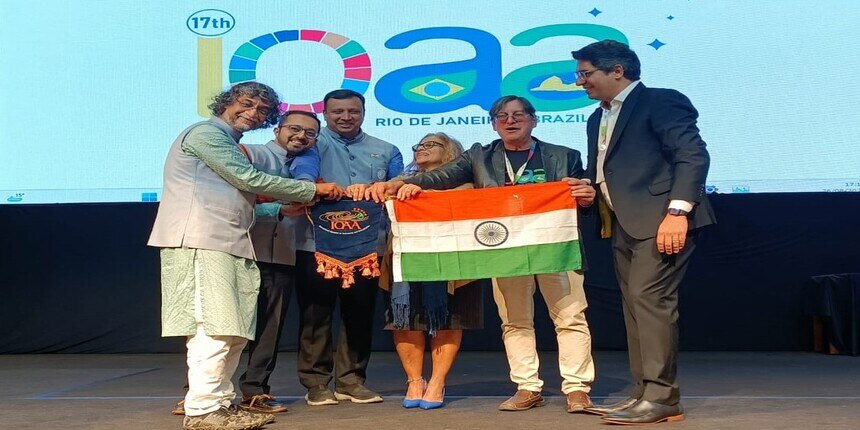India to host next International Olympiad on astronomy and astrophysics in Mumbai
Vaishnavi Shukla | August 28, 2024 | 02:56 PM IST | 2 mins read
Team India bagged one gold and four silver medals at the 17th edition of IOAA held in Brazil from August 17 to August 26.

NEW DELHI: The Homi Bhabha Centre for Science Education (HBCSE), under Tata Institute of Fundamental Research (TIFR), announced that India will be hosting the next edition of International Olympiad on Astronomy and Astrophysics (IOAA) in 2025. It also announced that Team India – which participated in the 17th edition of the event held in Rio de Janeiro, Brazil, from August 17 to August 26 – bagged five medals.
As per the HBCSE statement, “India will be hosting the next IOAA in August 2025 in Mumbai, and the event will be organised by HBCSE. The centre director of HBCSE Arnab Bhattacharya Bhattacharya received the IOAA flag from the present hosts and welcomed all to come to Mumbai next year”.
This year, Daksh Tayalia, a student from Bengaluru, won a gold medal while four others – Aayush Kuthari, Banibrata Majee, Sanidhya Saraf, and Panini – won silver medals.
The team of five Indian students was accompanied by two leaders, professor Bhargav Vaidya from Indian Institutes of Technology (IIT) Indore and Pritesh Ranadive, a member of HBCSE, TIFR, Mumbai.
The current event presidents of IOAA and scientific observers – professor Arnab Bhattacharya (HBCSE-TIFR, Mumbai), Vaibhav Pant (ARIES, Nainital), Akshat Singhal (HBCSE-TIFR, Mumbai), and Yash Mehta (OpenAI), professor Aniket Sule (HBCSE-TIFR) also accompanied the Indian students at the IOAA 2024.
There were 232 students from 52 countries participating in this year's IOAA. In the medal tally, India was in 8th position behind Iran (5 golds), USA (3 golds), Romania, South Korea, Singapore, Slovenia, and Canada (2 golds each), the notice stated.
Also read Indian team secures 4th position in International Mathematical Olympiad 2024; highest rank ever
IOAA competitions
The IOAA competition consists of three elements – theory (50%), observation (25%), and data analysis (25%). A team competition of mixed nations was also held.
The theoretical components of the competition included interesting problems on various topics like understanding the sundial, estimating the mass of a galaxy cluster, calculating highly elliptical orbits of asteroids, physics of white dwarfs, accretion discs of black holes, etc.
Another task was focused on the solar eclipse of 1919 when data was taken from Sobral, Brazil (and Africa) to confirm the predictions of the general theory of relativity for the first time. In the other task, students were asked to compute the properties of the orbit of a satellite from its ground track images.
The data analysis task was about the cross-calibration of two large optical surveys, while the other was on the proof of Shapley's hypothesis. The observational component used the Galileo-scope (a small refracting telescope) to measure the coordinates of an artificial star and mark it on a star chart.
Follow us for the latest education news on colleges and universities, admission, courses, exams, research, education policies, study abroad and more..
To get in touch, write to us at news@careers360.com.